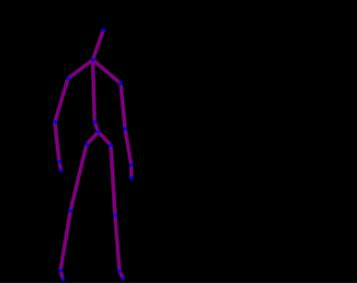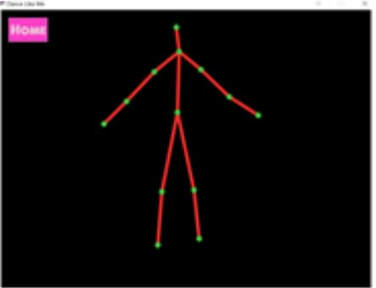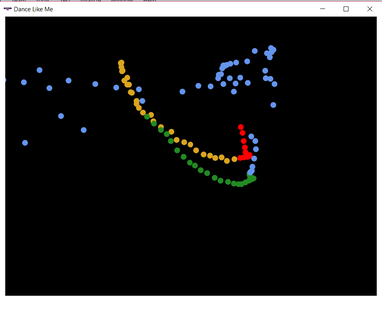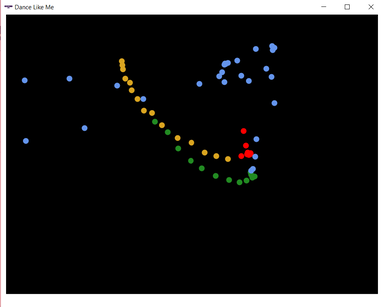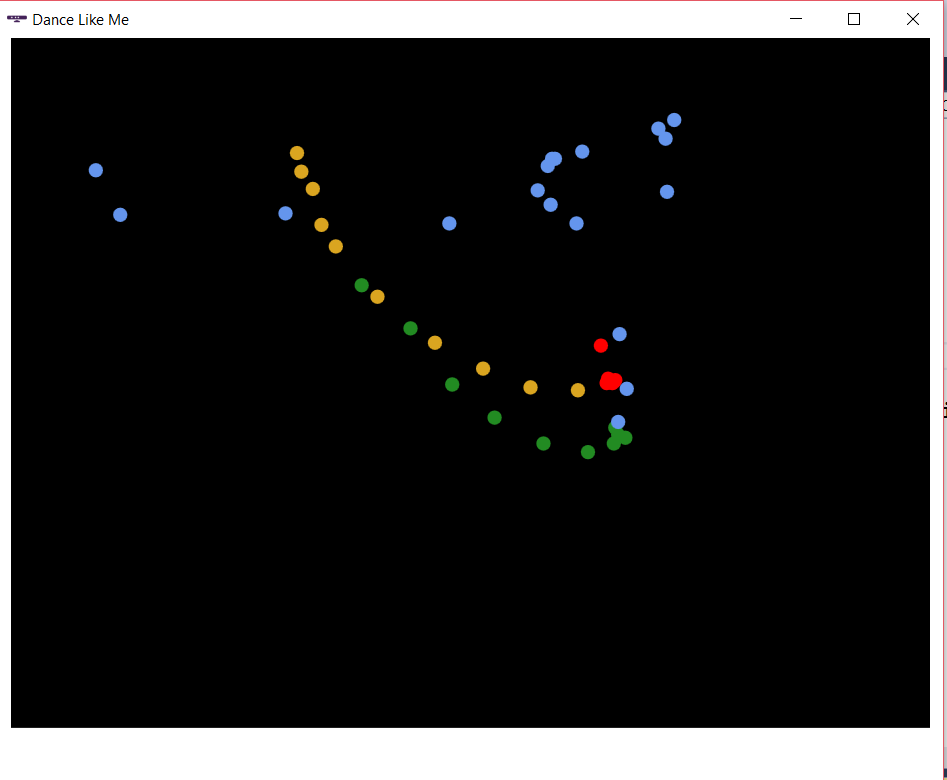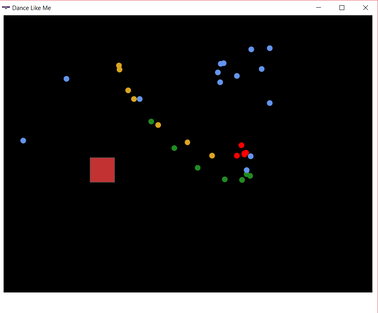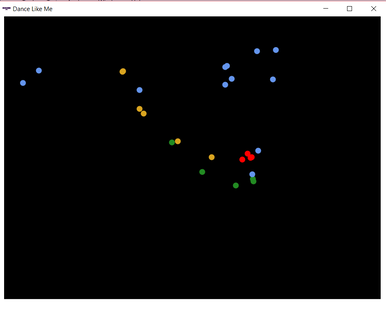Constructing Tiny Dancer
|
Tiny Dancer is my version of the Kinect's skeleton. The Kinect tracks 20 joints of a skeleton (shown left), but I felt that would be too much data to track, so I reduced the number to 13 joints.
This was done through a list of "excluded joints" that are eliminated before Tiny Dancer is drawn. |
Flow Charts & Views
Below are two flow charts that will explain the movements of this program.
The first handles the functional relationships between the functions of Dance Like Me.
The second handles the flow of data in and out of Dance Like Me.
The first handles the functional relationships between the functions of Dance Like Me.
The second handles the flow of data in and out of Dance Like Me.
| flow_charts.pdf | |
| File Size: | 56 kb |
| File Type: | |
Below is a document that shows the flows for each mode of the program and how different events lead to different pages of the program:
| view_movements.pdf | |
| File Size: | 893 kb |
| File Type: | |
Reducing Data Further
In this program, I reduced the amount of data collected (not the amount that the Kinect retrieves) to reduce the size of the program. I knew 30 frames per second would be excessive, so I tested different data amounts to reduce by. Flip through the photos below to see why I chose a rate of 10 Frames Per Second to reduce data collection to. The points depicted are the left wrist moving across the screen (the red points are the starting point, moving through the rainbow until it ends at blue). As you can see, they get more sparse as the frame count is decreased. I reduced the count as low as I could before I lost the integrity of the movement.
Click on each photo to see the decreasing amount of dots shown.
Click on each photo to see the decreasing amount of dots shown.
